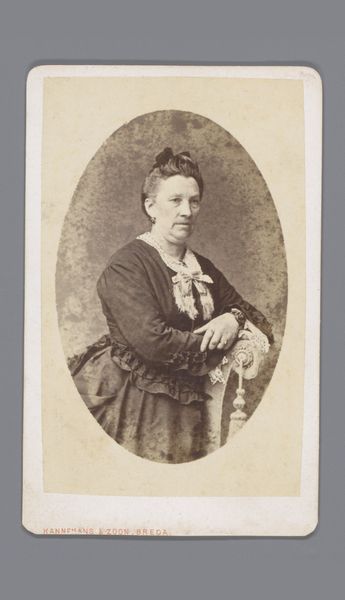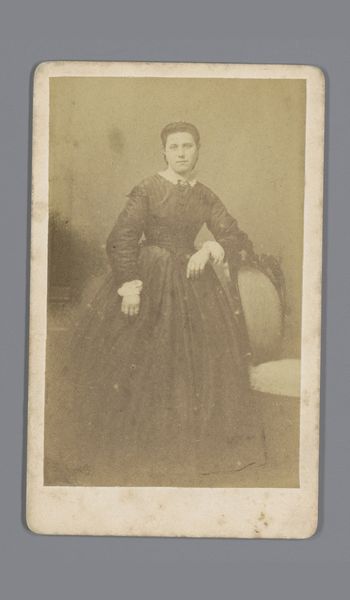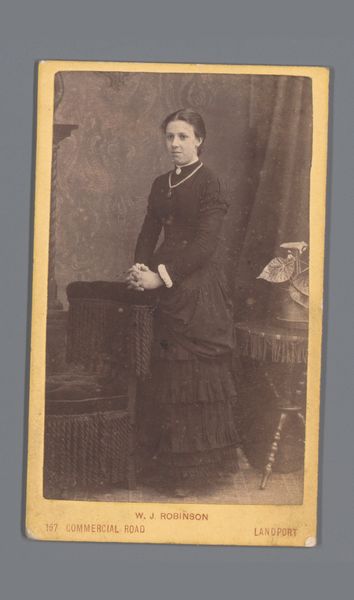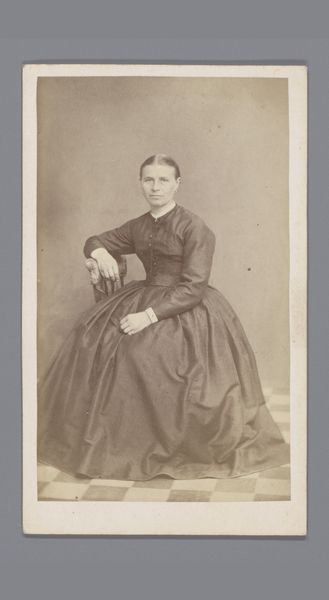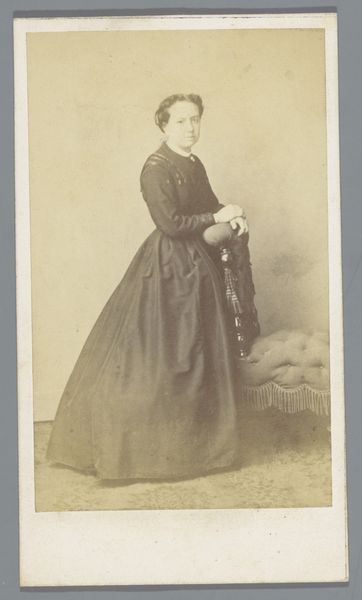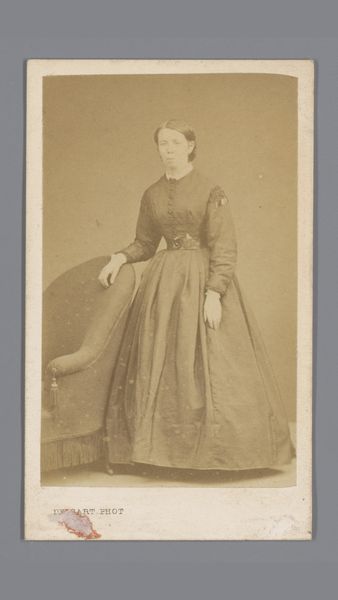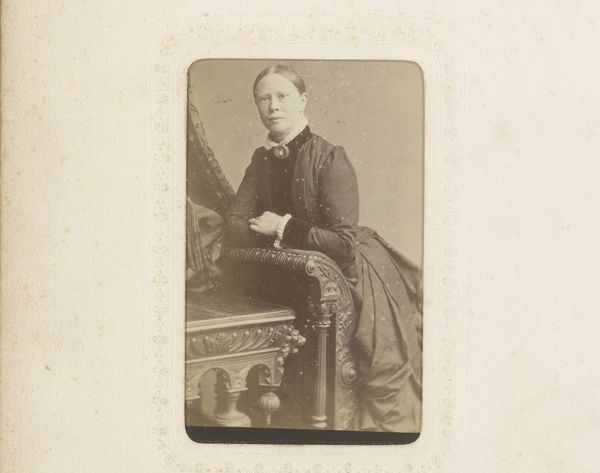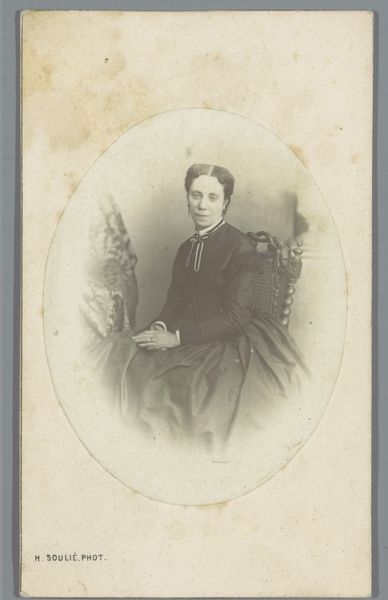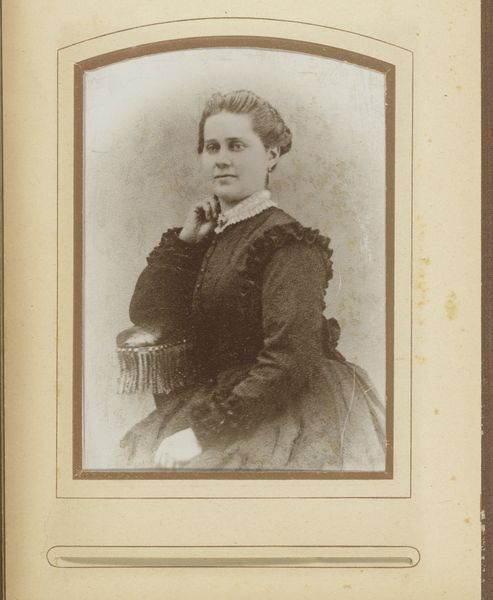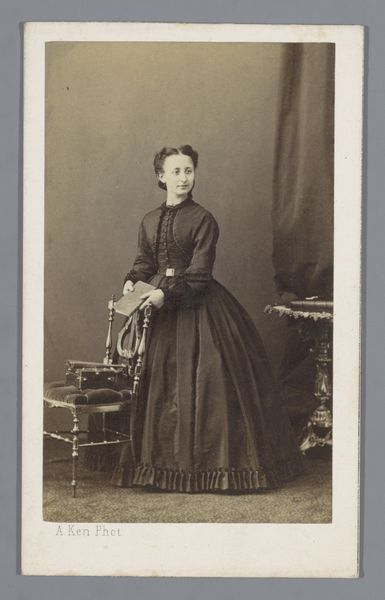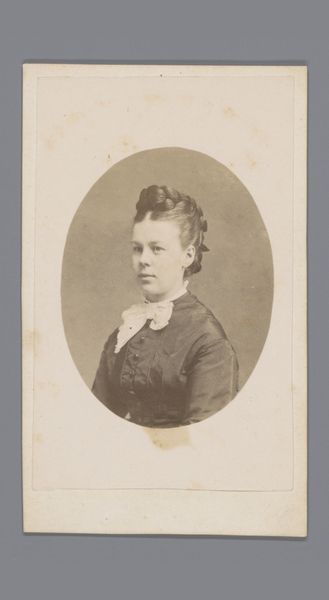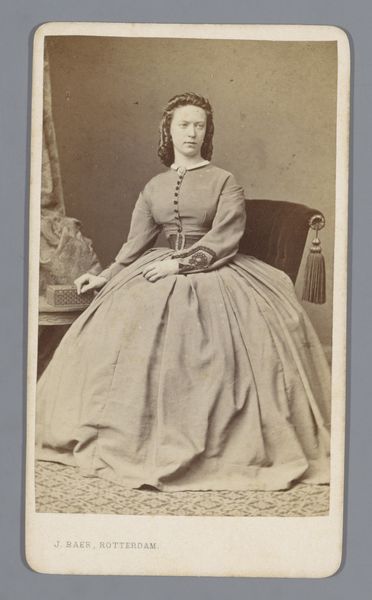
Portret van een onbekende vrouw leunend op een fauteuil 1860 - 1875
0:00
0:00
Dimensions: height 105 mm, width 64 mm
Copyright: Rijks Museum: Open Domain
Curator: Isn't she lovely? There's an immediate sense of longing about her, almost a gentle melancholy that's drawn me in from the start. Editor: I agree, the somber tone is captivating, but it's hard to ignore the historical weight here. What we're looking at is an albumen print, titled "Portret van een onbekende vrouw leunend op een fauteuil," dating from about 1860 to 1875 by Augustin Aimé Joseph Lejeune. Think about what photography meant at this time—a carefully constructed presentation. Curator: Absolutely, but doesn't that staged element contribute to the mystique? It’s a tableau of longing! I keep wanting to invent a narrative around her fan—is she signaling someone? Bored? Slightly flushed? Editor: Possibly! Or she's participating in a visual language available only to those in her societal sphere. The Romantic-era styling with the historical fashion on display emphasizes status—her identity tied to this stiff decorum. Curator: That very decorum is what creates such a lovely tension, right? The stiff posture with those braids suggesting something hidden. I almost want her to rebel. Is it my imagination or does the slightly off-center framing adds to that simmering disquiet? Editor: The framing does contribute to the unease—as does her carefully composed ambivalence! As an activist, I look for moments where individuals navigate systemic forces and the Romantic style in the portrait is so deliberate, an active choosing of what story to tell. The material realities of this album print format are fascinating because these images became so important to ideas around social performance. Curator: And isn’t that social performance, that dance between what's revealed and what's hidden, endlessly fascinating? She remains unnamed but far from unknown through her portrait. It’s not simply a rendering, but a revelation—that quiet power emanating from that image, as if the woman understood all along how future generations might interpret her pose. Editor: Ultimately, we might not know exactly what went through this woman’s head, but this portrait stands as evidence that fashion, styling, and pose were incredibly crucial tools for self-representation and participation in the political dynamics of the day. Curator: Agreed, what a thoughtful portrait. Thanks! Editor: You as well.
Comments
No comments
Be the first to comment and join the conversation on the ultimate creative platform.
